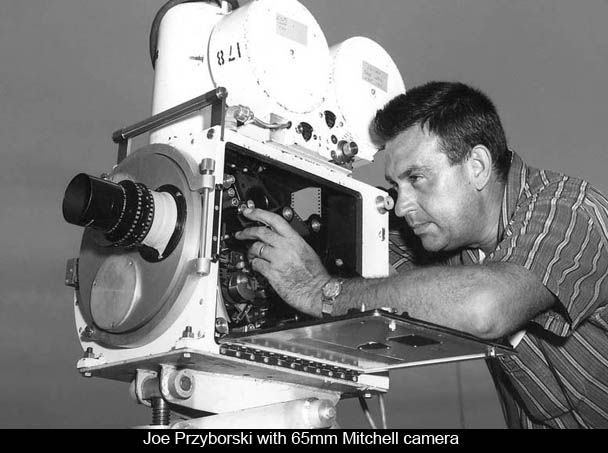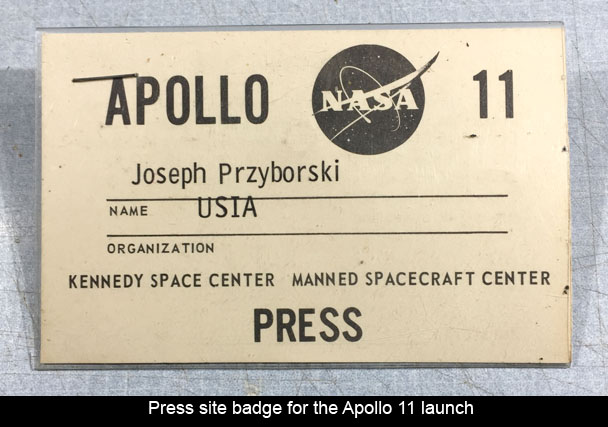In January 2001, The National Geographic Channel began cable & satellite programming to millions of homes across North America. From 2000 to 2002, Glenn Przyborski directed & photographed many of the network’s major promotions.
All projects were shot in 35mm at NatGeo’s headquarters in Washington, D.C. The network originated live & pre-recorded programming every weekday. That meant promo shoots were scheduled on weekends.
All promos involved complex effects and graphics. Przyborski worked closely with digital artists from San Francisco’s, 168 Design who handled post-production, special effects and motion graphics. The iconic National Geographic theme music was originally composed by Elmer Bernstein.
Here’s a fun look at a crazy network ad campaign produced for Stanley Steemer, America’s largest residential and commercial cleaning service.
Corporate creative director, Jim McCabe called with an unusual production request. In 2006, the company had marketing success with a funny commercial that featured “Toby” a Labrador Retriever scooting his butt across the living room carpet to the shock of the homeowner and her friend. Jim wanted to revisit the concept, only this time “Toby” would scoot over carpet, tile and hardwood floors. Plus, Jim also wanted a trained parrot who harasses Toby.
Glenn Przyborski directed and photographed the campaign using 2 cameras on each shot for more editorial options. 2 cameras also gave an “insurance factor” just in case the trained animals “lost interest” after several takes. Everything was shot and edited in 4K UHD, then downsampled to 1080 for final release.
A short time ago, I ran into Russ Streiner, an old friend who’s best known as the producer of George Romero’s, “Night of the Living Dead”. He has the unique distinction of being the first person in the film killed by a zombie. Russ was excited about the Blu-ray HD release of this classic horror film. In the 60’s & 70’s, Russ produced dozens of television ad campaigns. Many people are unaware that his business partner, the late George Romero, was a popular director, cinematographer and editor of TV spots before moving on to motion pictures.
Russ asked if I had saved any of the old commercials created by Hartwick-Przyborski Productions. Paul Hartwick (who passed in 2013) and I founded the company in 1975. From 1975 to 1987, “H/P” produced hundreds of TV commercials for clients and ad agencies across the USA. At one time, we had offices in New York, Chicago and Pittsburgh.
I located several boxes of old 2” and 1” videotape. All these spots were originally shot on 35mm film. In the 70’s & 80’s, commercials were distributed to networks and TV stations, exclusively on videotape.
In no particular running order, I selected 25 commercials. They look and sound so dated when compared to what we do today. Check out the popularity of musical jingles and just how bad electronic title graphics looked 35+ years ago. If you’re over 40, you might remember some of these ads from when they originally aired…
This video is also on Vimeo: https://vimeo.com/272371561
Living in the city of Pittsburgh, it’s easy to forget that most of Pennsylvania is rural farm country.
Once a year, my wife Carol and I travel an hour and a half north of Pittsburgh to Meadville, Pennsylvania. It’s the annual site of the Crawford County Fair, the largest agricultural and livestock exhibition in the state. For an entire week, kids and adults from all over Northwest Pennsylvania show off the best looking animals they’ve raised. 4H members and others take pride in their sheep, cattle, pigs, horses, goats, ducks and chicken. Every exhibitor hopes to win a prize and the bragging rights to having raised a “best of show” animal at the Crawford County Fair.
I call this video “Scenes from a Pennsylvania County Fair” because every week in the summer, scenes like these repeat themselves in rural towns across the state and throughout the country. It’s was a hot, sticky 92 degrees at the fair but everybody enjoyed walking the fairgrounds, eating junk food and catching up with their old friends.
Here’s a 4 minute “mini time capsule” of GNC’s early TV advertising. General Nutrition Centers had an amazing period of growth and profitability in the early 90’s. During this time, TV Advertising helped GNC realize it’s first quarterly profit as it went public for the second time.
From ’93 through ’96, Przyborski Productions produced most of GNC’s network TV spots. We introduced their “Gold Card” and many product lines that are still in stores today.
All the commercials were filmed in 35mm, then transferred and edited on 1″ videotape. By the end of 1993, we were editing on D2 composite digital. (In the 90’s, everything was standard definition.)
Most of these old commercials are dated and a little “corny.” Saturday Night Live even did a comedic parody on GNC’s “Colon Cleanser”, titled, “Colon Blow.” Thirty years ago, sophisticated computer graphics were in their infancy. The stock music GNC used also dates the ads. The commercials in this video were selected from several GNC campaigns.
Greg Yost, creative director of Lazor-Yost Marketing & Design, has passed away.
I first met Greg in the early 90’s. He was creative director of “The Kaiser Group”. Greg was the first agency art director I encountered that was sure computers would take over all mechanical aspects of layout & design in advertising. We both owned early Macintosh systems, and once a month we’d get together to swap 3.5” floppy disks of programs we either bought or borrowed.
The first project I directed and photographed for Greg was for Sheetz. Greg did much of the early creative marketing concepts and in-store signage for this family owned, Altoona based company. They were trying hard to be more than a group of “7-11 type” convenience stores. Greg created the advertising that introduced Sheetz Coffee, “MTO” food items, Sheetz Hot Dogs, “Sheetza Pizza”, “IT” Cola, “Jacks” cigarettes and Sheetz’s own brand of gasoline. When you pull into a Sheetz for coffee, food or gas… remember Greg Yost.
I also filmed many of Greg’s creative and sometimes crazy TV campaigns for Hoss’s Restaurants, HealthSouth Rehab Centers, Fruth Drug Stores, Unimart, CEI Cable & Internet and Atlantic Luggage. The projects always had limited budgets, but we always had fun shooting Greg’s concepts.
I last spoke with Greg in May and he never mentioned that he was sick and undergoing treatment for cancer. We talked about how the ad business had changed over the past couple decades and that today we’d never get away with what we used to do… He sounded positive, upbeat and directly involved in the marketing efforts of his clients.
As a remembrance, here’s a few of Greg Yost’s favorite TV projects from 1991 through 2009…RIP my friend.
2019 marks the 50th Anniversary of man’s first journey to the moon. Unlike the secretive Russians, we let the whole world watch the historic event from lift-off at Cape Kennedy to splash-down in the Pacific ocean.
“Apollo 11” is an amazing documentary, produced by CNN films, that details the entire journey with half-century old, restored film from the National Archives. Some of the footage has never been released to the public.
My late father, Joseph Przyborski was one of the cameramen who documented almost every launch from the late 50’s through mid-70’s. They used 16mm, 35mm and 65mm motion picture cameras. After watching the film in IMAX, I’m sure some of the shots that make up “Apollo 11” were filmed by my dad.
Shooting in an amusement park is lots of fun & “organized chaos”. No matter how well you plan shots, sh## happens. Amusement parks were always open to the public when we filmed, so you couldn’t disrupt a paying customer’s experience. I often used 200mm & 300mm telephoto lenses so we could stage “spontaneous action” without nearby patrons realizing what was going on. After a good take, production assistants would get releases from anyone who may have been visible in the scene. Often these patrons were rewarded with a free pass or voucher that allowed another park visit that summer.
I shot these projects in 35mm with my Arriflex 35BL4 & Arri352C using Zeiss primes, Angenieux 20mm-120mm & 25mm-250mm zooms & Canon 200mm & 300mm telephotos. Film processing was handled by Detroit’s, Producer’s Color or Cinefilm in Atlanta. Film-to-tape transfers & color grading took place at Producer’s Color or Nashville’s, Elite Post.
Please enjoy this retro collection of summertime fun… Glenn Przyborski
On Friday, April 7th, the Rock and Roll Hall of Fame inducted England’s popular 70’s & 80’s rock group, YES. Cheering in the audience was John Brabender, one of the country’s best known political media experts, ad agency owner, and long-time super-fan of YES. Brabender also led a crusade to get his favorite band inducted into the Rock and Roll Hall of Fame.
Every once in a while, a project comes along that’s completely different and fun to shoot. With hits like “Roundabout”, “Owner of a Lonely Heart”, “Long Distance Runaround” and many more, YES, is truly a super group from the 70’s & 80’s. Yet they still have a huge, cult-like, devoted following that sells out every performance.
For the group’s U.S. tour, Brabender asked Glenn Przyborski to direct and photograph several short videos that would play on YES’ concert video screens. They were tied to late 70’s nostalgia, including an homage to a scene from the movie “Almost Famous”. The videos were played before the band’s performance and to signal the end of intermission.
The videos were edited at Phenomenon by Thad Christian. John Brabender created the original concepts.
SmithFoods of Orrville, Ohio is a family owned company, founded in 1909. They supply premium dairy and other food products throughout Ohio, Indiana and Missouri.
The Innis Maggiore Agency of Canton, OH chose Przyborski Productions to produce SmithFoods’ latest TV campaign. The concept called for casting 5 children and 5 adults who could be those same kids, only now in their 40’s.
Glenn Przyborski directed and photographed the commercial in 4K digital. Props and wardrobe stylists selected kid’s clothes and table props that were popular in the mid-to-late 80’s. Back then, all TV was standard definition, so we rendered the opening sequence in the 4 x 3 ratio of older TV sets. After several visual tests, we decided not to alter the color or contrast of the opening sequence.
The commercial runs throughout Ohio and selected portions of the Mid-West.



